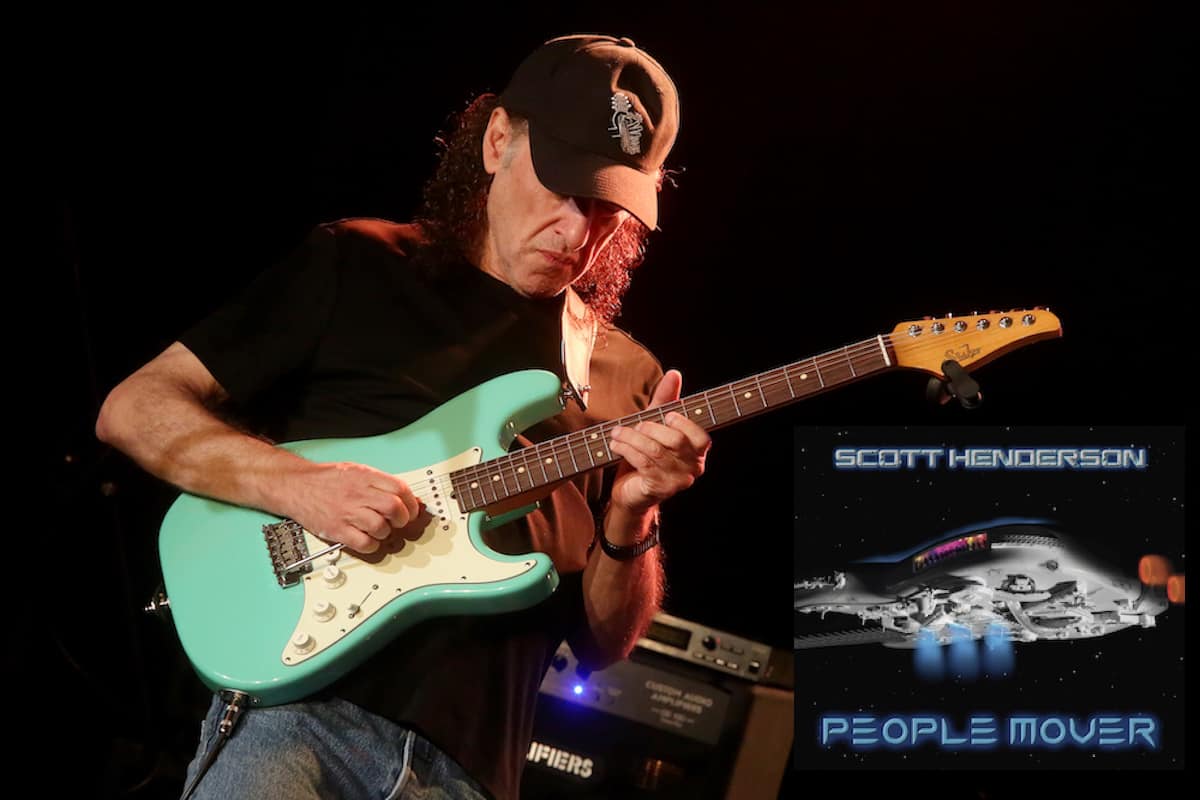Artist Features
Scott Henderson Shares Insight into his Recording Process

Scott Henderson shares details and recording techniques from his latest fusion project, ‘People Mover’
Article by Scott Henderson
First, a disclaimer: most of the time I have no idea what I’m doing from a theory standpoint when I compose – I’m just experimenting with sounds I hear. Eventually, I write guitar charts and “name” the chords, since most guitarists like to see chord symbols, no matter how weird they are. When I write the charts, I learn what to call what I wrote – I’m sure many composers have a similar experience. The only thing I usually know from the beginning is the feel and tempo of the song, so most of my writing is done in real time over a drum machine groove, by jamming or singing phrases, and then picking my favorites later. Once I have a rough blueprint for the song, I can delve deeper into harmonic choices. One thing’s for sure – the hardest part about composing is the application of the ass to the chair.
About the recording process, I’m pretty old school about the band playing live in the studio.
We play the songs many times on the road before recording them – the more we play them, the more organic and interactive they become. However, I’m not old school about production, and I’m comparing my views with those of jazz purists, who believe that a record is basically a live performance and nothing should be changed. To those people I’d say, I’m not doing theatre here, I’m making a movie. If you want theatre, get my live albums or watch me on YouTube – there’s plenty of mistakes and damage control to enjoy.
My production viewpoint comes from jazz – keeping all the interplay that happened in the studio. It also comes from being a rock guitarist – trying to get the best tones I can. My favorite tones come from using a 100 watt Marshall and a 4×12 cab at insane volume levels. I’m an engineer’s worst nightmare since he can’t keep the guitar out of the drum mics even if the cab is five rooms away. Over the past few years, I’ve been experimenting with IR’s in the studio, and I think they sound pretty good, or at least good enough to make me feel comfortable and enjoy playing. I always hope that I’ll be able to keep as much as I can from the session. However when I get the tracks home and compare them to my
OK, all that being said, let’s look at Primary Location, the 2nd tune on the album. Again, I have no idea how I wrote it, but the production stuff in this tune was a lot of fun. The intro was done with a Suhr-modded Fender Bandmaster, a Voodoo One pedal and the Soundtoys Filter Freak plug in. The melodies are done with a ’71 Marshall and RC Booster pedal. On the solo I used a Klon, and Filter Freak again. I had a hard time with this solo – the one I played in the studio sucked ass, so I had to overdub a new one. It’s over a pretty static one-key funk groove and there wasn’t much band interplay going on. As much as I tried, I couldn’t come up with anything I liked, so I took a lesson from my good friend Scott Kinsey (keyboardist for Tribal Tech) who suggested that I record a comp track first and then play to that. Great suggestion and I’m happy with the way it came out.
After the solo, the tune goes in a softer direction. The IR I was using in the studio was horrible for that, so nothing I played was useable. I tried the Marshall and Fender at home with a bunch of different pedals and hated it all, and started to wonder why I was being so anal. The answer came when I listened back to my original composition sequence. When I write, I use a Pandora PX5D, which is just a little
On the title cut People Mover, I got the chance to tie the song to the album artwork by grabbing some cool spaceship sounds from prosoundeffects.com.
Those guys rock – they have every sound you can imagine for five bucks each!! When we play this song live, we open it up for long guitar & bass solos, which work in the context of the set, but on the album, I decided to re-create the exact composition sequence, where every improvised part I played was a first take, including the solos. I tried re-creating those solos with my amps, but again I thought the original solos done with the Pandora sounded better in the context of the song. My favorite effect on this tune is the Soundtoys Phase Mistress plugin, which does really cool and unpredictable step-phasing, so it was a lot of fun to create those parts. There’s also some fun Soundtoys EchoBoy stuff, like the Tel-Ray echo on the solos and a stereo Echoplex preset called “Dancing Plexi’s” on the main melody. Another composition disclaimer: the chorus is a very standard chord progression used in a million other tunes, so I can only take credit for the melody.
Hope this wasn’t excruciatingly boring to read. What can I say? I’m a nerd.
Check out the Scott Henderson Jazz Guitar Today cover story.
-
Jazz Guitar Lessons2 weeks ago
New JGT Guitar Lesson: Analyzing “Without A Song”
-
Jazz Guitar Lessons4 weeks ago
New JGT Guitar Lesson: Considering “Falling Grace”
-
Artist Features1 week ago
New Kurt Rosenwinkel JGT Video Podcast – July 2024
-
Artist Features3 weeks ago
JGT Talks To Seattle’s Michael Eskenazi




















